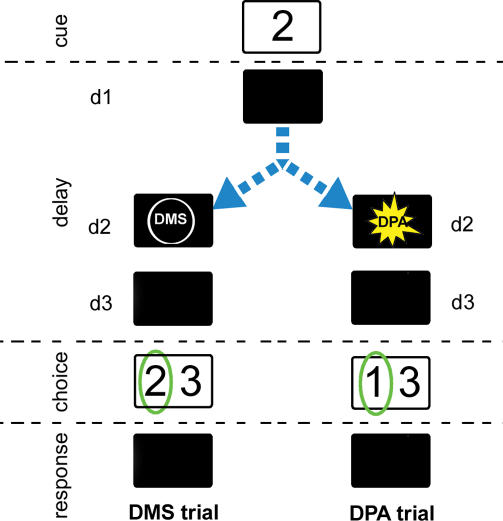Figure 1. Diagram of the MDR Task.
The MDR task consists of randomly mixed DMS and DPA trials [11]. The stimuli used in the simulations are represented by numbers 1, 2, 3, and 4. A sample image is presented during the cue period and then hidden during the delay. A task signal specifying which task the subject is expected to perform is briefly displayed during the delay (subdelay d2). Two images are then presented during the choice period: a target (circled in green) and a distractor. The target image depends on the trial type: it is identical to the sample image in DMS trials, and it is the sample's paired-associate image in DPA trials. In DPA trials, images have been associated in the arbitrarily chosen pairs {1,2} and {3,4}. If the subject chooses the target image, it will receive positive reward during the subsequent response period. Otherwise, negative reward is dispensed to the subject. Note that the task signal is not essential to trial success: the subject can figure out after the delay which task it is required to perform by inspecting the proposed stimuli. The signal, however, gives the subject the opportunity to act prospectively and to anticipate the target during the delay.
Length of trial periods used: cue, 0.5 s; delay (divided in subdelays: d1, 0.3 s; d2, 0.4 s; and d3, 1.0 s); choice, 0.5 s; and response, 0.5 s.

